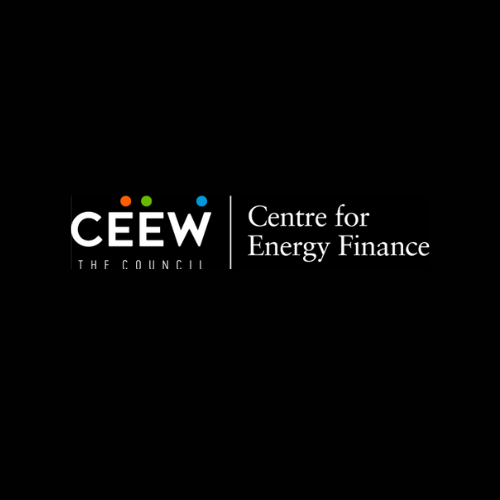- 6 Beiträge
- 1 Fotos
- 0 Videos
- CEEW-CEF
- Lebt in New Delhi
- Von New Delhi
- 07/07/1990
- anschliessend 0 people
Jüngste Beiträge
- What is carbon pricing?
Carbon pricing involves mechanisms that assign a cost to greenhouse gas (GHG) emissions to discourage them. This includes carbon taxes and emissions trading systems that internalize emission costs, as well as carbon offset schemes allowing investors to support emission reduction projects and claim the savings towards their own decarbonization goals.
https://www.ceew.in/cef/quick-reads/explains/carbon-pricing
What is carbon pricing? Carbon pricing involves mechanisms that assign a cost to greenhouse gas (GHG) emissions to discourage them. This includes carbon taxes and emissions trading systems that internalize emission costs, as well as carbon offset schemes allowing investors to support emission reduction projects and claim the savings towards their own decarbonization goals. https://www.ceew.in/cef/quick-reads/explains/carbon-pricingWWW.CEEW.INCarbon Pricing | CEF ExplainsCarbon Pricing0 Kommentare 0 Anteile 162 Ansichten 0 VorschauPlease log in to like, share and comment! - What is Electricity banking?
Electricity banking in Tamil Nadu, introduced in 1986, promotes wind energy generation for captive and third-party open access. It operates like a savings account: excess energy generated by wind or solar projects is supplied to the electricity distribution company (discom) and can be withdrawn later. Customers pay 'banking charges' instead of earning interest.
https://www.ceew.in/cef/quick-reads/explains/what-is-banking
What is Electricity banking? Electricity banking in Tamil Nadu, introduced in 1986, promotes wind energy generation for captive and third-party open access. It operates like a savings account: excess energy generated by wind or solar projects is supplied to the electricity distribution company (discom) and can be withdrawn later. Customers pay 'banking charges' instead of earning interest. https://www.ceew.in/cef/quick-reads/explains/what-is-bankingWWW.CEEW.INWhat is banking? | CEF ExplainsWhat is banking?0 Kommentare 0 Anteile 137 Ansichten 0 Vorschau - What is ALMM?
The Approved List of Models and Manufacturers (ALMM) by the Ministry of New and Renewable Energy (MNRE) includes approved solar PV models and manufacturers for use in Indian solar projects. This list is mandatory for government projects, government-assisted projects, open access, net-metering projects, and schemes like SECI and KUSUM.
https://www.ceew.in/cef/quick-reads/explains/what-is-almm
What is ALMM? The Approved List of Models and Manufacturers (ALMM) by the Ministry of New and Renewable Energy (MNRE) includes approved solar PV models and manufacturers for use in Indian solar projects. This list is mandatory for government projects, government-assisted projects, open access, net-metering projects, and schemes like SECI and KUSUM. https://www.ceew.in/cef/quick-reads/explains/what-is-almmWWW.CEEW.INWhat is ALMM? | CEF ExplainsWhat is ALMM?0 Kommentare 0 Anteile 84 Ansichten 0 Vorschau - Who the major players in Indian EV financing are?
Auto loans are crucial in India's retail lending sector. As the economy recovers post-COVID-19, demand for personal vehicles, especially two-wheelers, is increasing. Approximately 77% of all vehicles in India are financed through banks and NBFCs, with significant borrowing in commercial vehicles, three-wheelers, and two-wheelers.
https://www.ceew.in/cef/quick-reads/explains/who-the-major-players-in-indian-ev-financing-are
Who the major players in Indian EV financing are? Auto loans are crucial in India's retail lending sector. As the economy recovers post-COVID-19, demand for personal vehicles, especially two-wheelers, is increasing. Approximately 77% of all vehicles in India are financed through banks and NBFCs, with significant borrowing in commercial vehicles, three-wheelers, and two-wheelers. https://www.ceew.in/cef/quick-reads/explains/who-the-major-players-in-indian-ev-financing-areWWW.CEEW.INWho the major players in Indian EV financing are | CEF ExplainsWho the major players in Indian EV financing are0 Kommentare 0 Anteile 162 Ansichten 0 Vorschau - Roadblocks and solutions to Financing EVs in India
India's automobile sector relies heavily on third-party financing, with personal loans growing by 16% in May 2022. As policies push for decarbonization, electric vehicles (EVs) are expected to become mainstream. Key challenges for EV loans include high-interest rates, shorter tenures, and low LTV ratios, requiring solutions for accessible and affordable financing.
https://www.ceew.in/cef/quick-reads/explains/roadblocks-and-solutions-to-financing-evs-in-india
Roadblocks and solutions to Financing EVs in India India's automobile sector relies heavily on third-party financing, with personal loans growing by 16% in May 2022. As policies push for decarbonization, electric vehicles (EVs) are expected to become mainstream. Key challenges for EV loans include high-interest rates, shorter tenures, and low LTV ratios, requiring solutions for accessible and affordable financing. https://www.ceew.in/cef/quick-reads/explains/roadblocks-and-solutions-to-financing-evs-in-indiaWWW.CEEW.INRoadblocks and solutions to Financing EVs in India | CEF ExplainsRoadblocks and solutions to Financing EVs in India0 Kommentare 0 Anteile 125 Ansichten 0 Vorschau - 0 Kommentare 0 Anteile 16 Ansichten 0 Vorschau
Mehr Artikel





